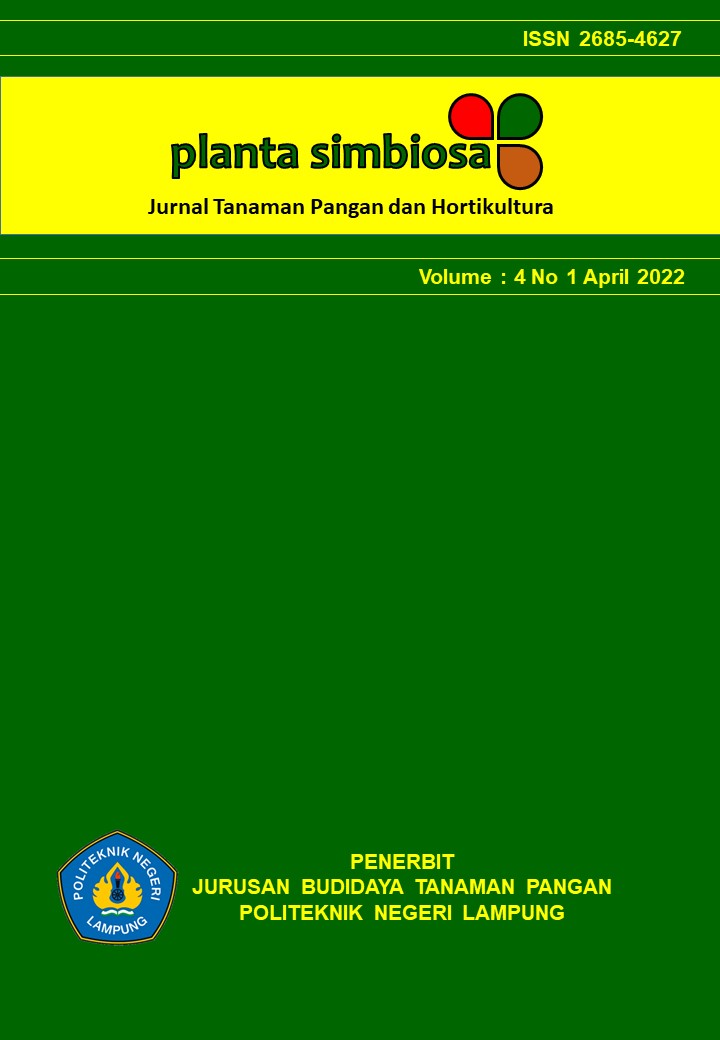Application of Nitrogen Fertilizer with Capillary Fertigation Method on Pohpohan (Pilea trinervia Wrigth) For Urban Farming
Application of Nitrogen Fertilizer with Capillary Fertigation Method on Pohpohan (Pilea trinervia Wrigth) For Urban Farming
DOI:
https://doi.org/10.25181/jplantasimbiosa.v4i1.2519Abstract
Indonesia has a variety of useful plant species, for example is vegetable group. History proves that our ancestors have used indigenous vegetable plants as food and health. Society interactions with indigenous plants such as pohpohan show that people care about health. Pohpohan plants have wide adaptability. Wide adaptability and high nutritional value make this plant feasible to developed in other areas include Lampung, especially urban areas. The study aimed to determine the type of fertilizer that suitable to be applied to pohpohan plants using the capillary fertigation method. The research was arranged using a completely randomized group design treatment in the form of a single factor type of fertilizer with details: P1 (Urea), P2 (Biotipul), P3 (Queen of Biogen), P4 (Green Star), and P5 (Humagron). The research was conducted at the Lampung State Polytechnic from May to October 2021. The results showed that Green Star fertilizer gave the best results on the number of shoots (JT) and plant height (TT), while Ratu Biogen fertilizer gave the best results on stem diameter (DB) and first harvest weight (BP1). Keywords: indigenous, health, urban farming.Downloads
Download data is not yet available.
Downloads
Published
2022-04-29
How to Cite
Marveldani, M., Maulana Sy, E. ., & Dulbari, D. (2022). Application of Nitrogen Fertilizer with Capillary Fertigation Method on Pohpohan (Pilea trinervia Wrigth) For Urban Farming: Application of Nitrogen Fertilizer with Capillary Fertigation Method on Pohpohan (Pilea trinervia Wrigth) For Urban Farming. J-Plantasimbiosa, 4(1), 1-11. https://doi.org/10.25181/jplantasimbiosa.v4i1.2519
Issue
Section
Artikel








